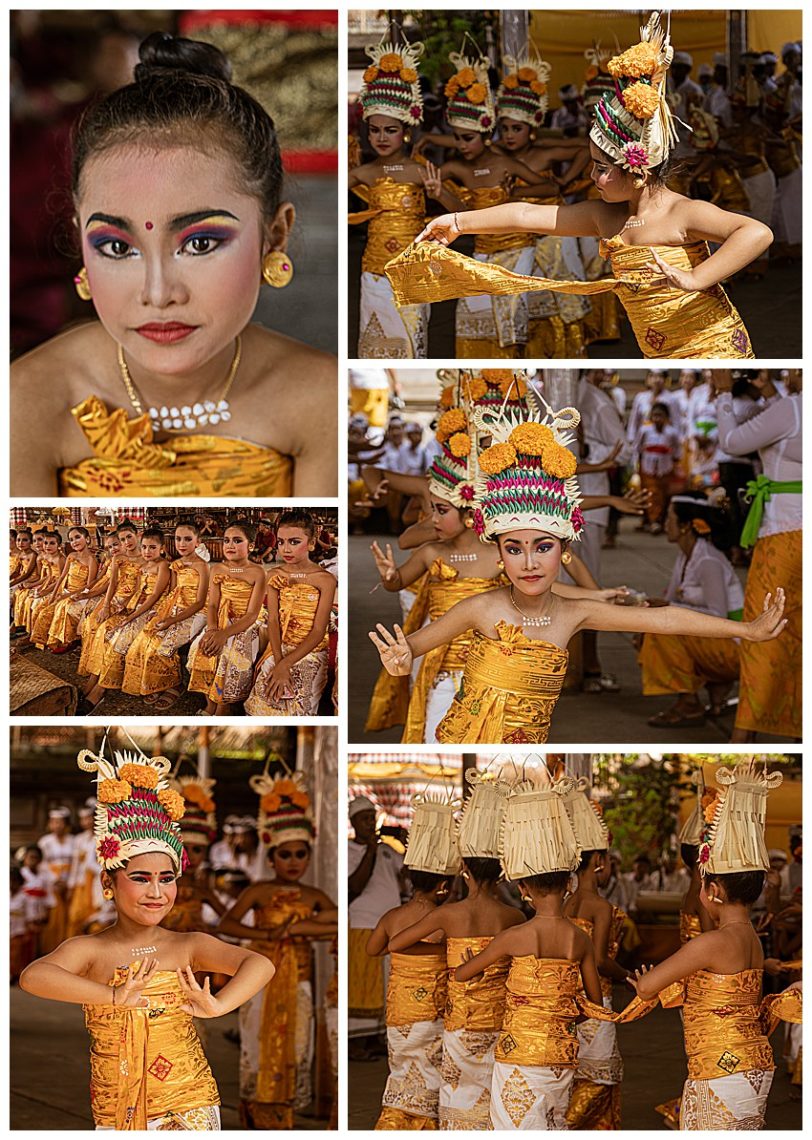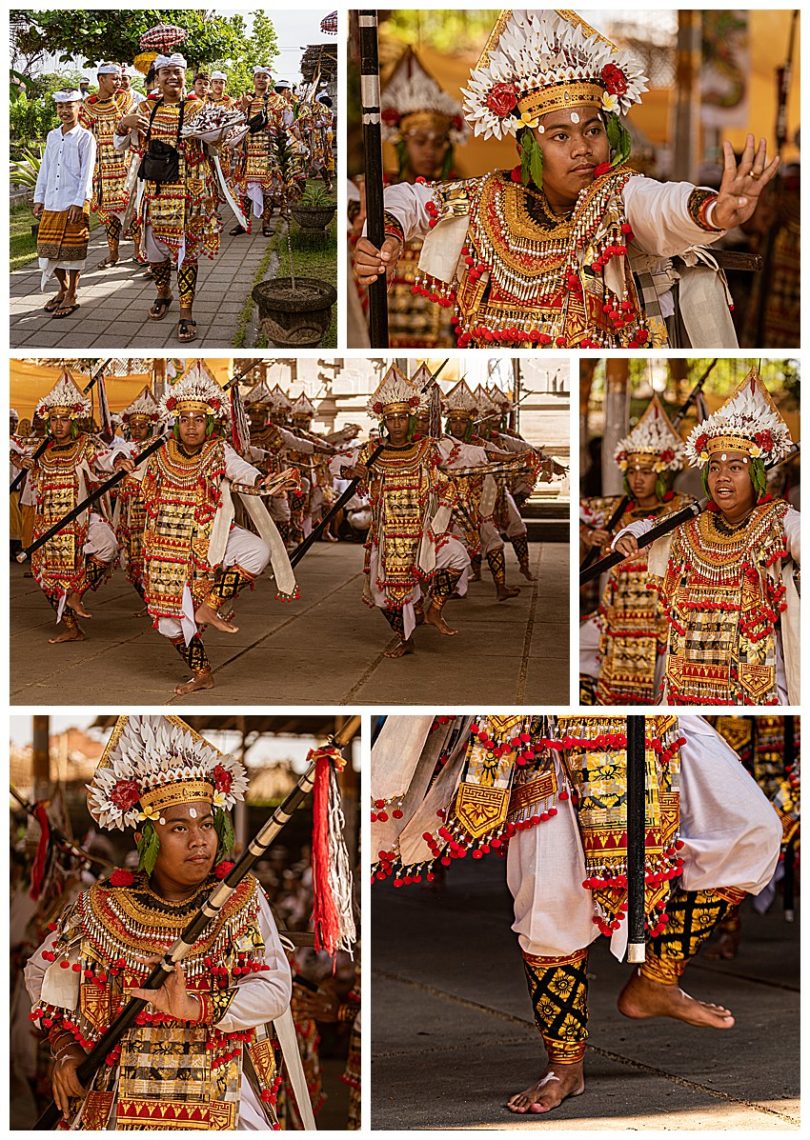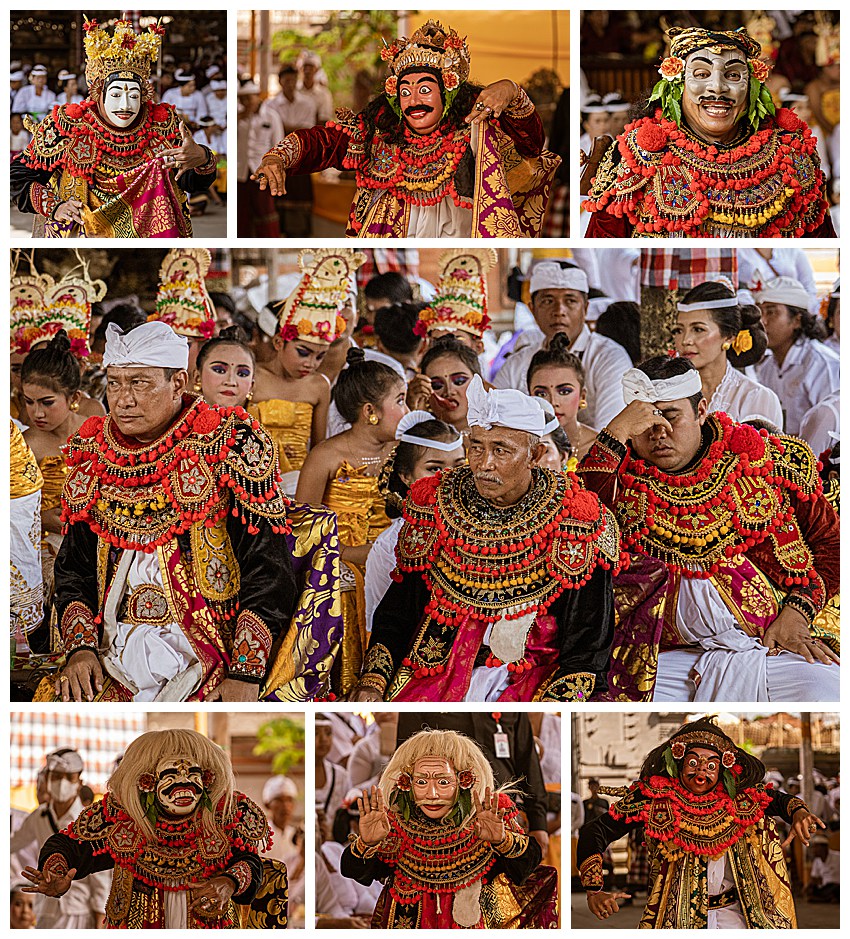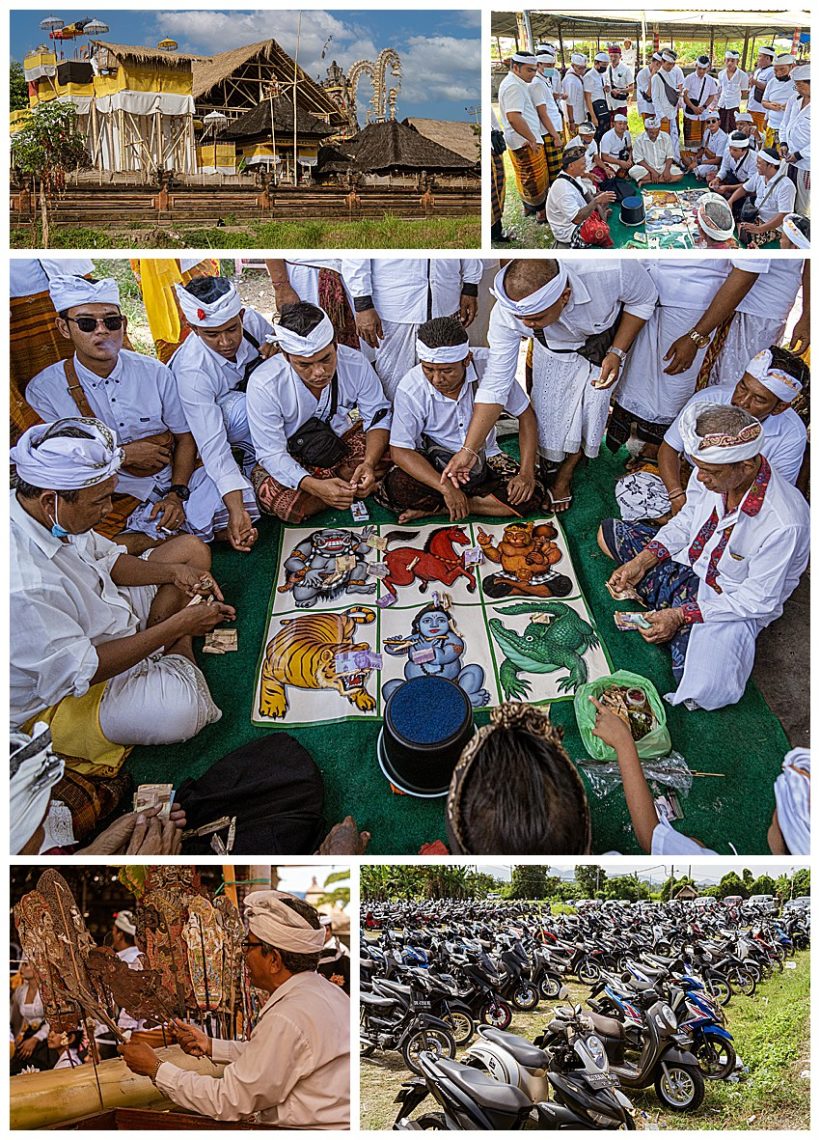
An Odalan or temple ceremony usually lasts for three days, but larger ones, which occur every 5, 10, 30 or 100 years, can last for 11 days or longer. This is one of the larger celebrations that occurs every 30 years, called Karya Agung, or “Great Ritual,” and was held at the Pura Puseh Temple at Tulikup Kelod.
The gist of what is happening here is that the Balinese are honoring the deities that rule over the temple by giving them a myriad of offerings, performances of vocal music, dance and gamelan music. They invite them down from their abode on Mount Agung to partake in the activities.
Temple ceremonies include traditional music. Balinese gamelan is played with an ensemble of musical instruments especially percussion instruments such as gongs, drums, met allophones, xylophones, and a bamboo flute. Gamelan originates from “gamel”, a Java term which means “to strike with a mallet”. They have a very distinctive sound, with fast rhythm at high speed. Some of the instruments are made from bronze, others are made from bamboo.
Above is a short 28 second video allowing you to hear Gamelon music, played throughout Bali during these celebrations. It is a very rhythmic (repetitive…) music that continues sometimes for hours.

Most Balinese dance incorporates ancient Hindu traditions or traditional folk rituals and has recently been recognized in 2015 as an UNESCO intangible cultural heritage to be preserved. Children are taught the Balinese dance movements starting around the age of 7. You can see the gestures of the eyes, hands, fingers, arms, hip, feet and face coordinated with the percussive sounds. The girls above are performing the Rejang dance, a sacred dance where the girls offer themselves to the gods. “Rejang” means “offering” and is a dance to greet the gods that come down to earth.
36 seconds of the girls’ dance is captured here, to give a better feel for the form. Highly stylized with specific hand positions, these girls start learning the form at the age of 7.

Men dress as warriors in the Balinese Baris dance. Above shows the Baris dancers, a traditional war and sacred dance for young men. The word “Baris” means a “line of troops” or warriors who fought for the kings of Bali. Dancers must portray fierceness, pride, compassion and other characteristics of a noble warrior.
Again, a very short (50 second) clip to give a more concrete feeling of what the dance is like. The men are much more coordinated and stylized than the girls, partly because these are adult with more practice than the younger girls who danced earlier.

The Topeng are masked performers above symbolize the spirits from the ancestral world. Their spiel went on for an hour, in which they taught the origin of Hindu as they traveled from from India to Java to Bali. Depending on the various masks used, these stories are often humorous or have a moral twist to it.

In another part of the compound, men engaged in a form of gambling. There was also evidence of a cock fighting setup, which is only permitted when there are special festivals.
We couldn’t leave you hanging with just that single photo of the game board! Here is a 45 second clip showing the men playing. We actually have no idea of what the rules or goals are of the game, other than it is played with cash, seen tossed onto the board. We were told that the man on the far right won four games in a row, and the group broke up shortly after this clip was captured.